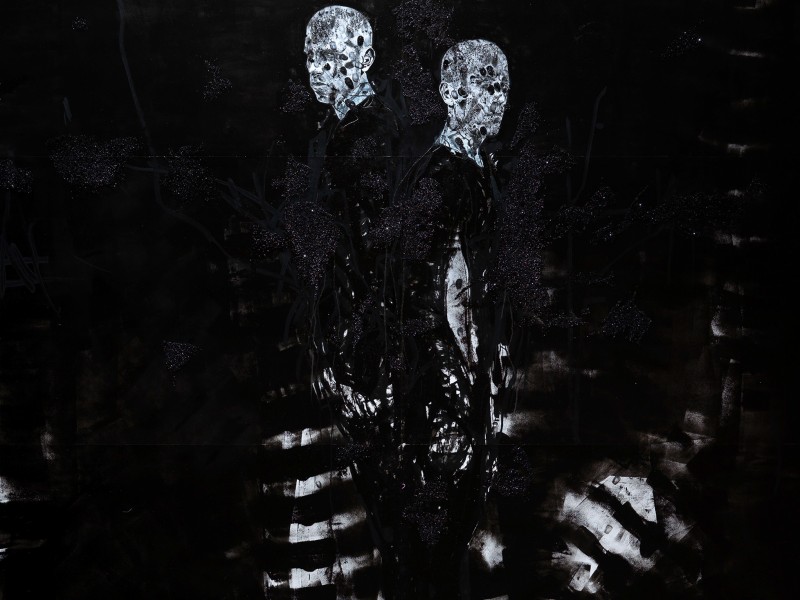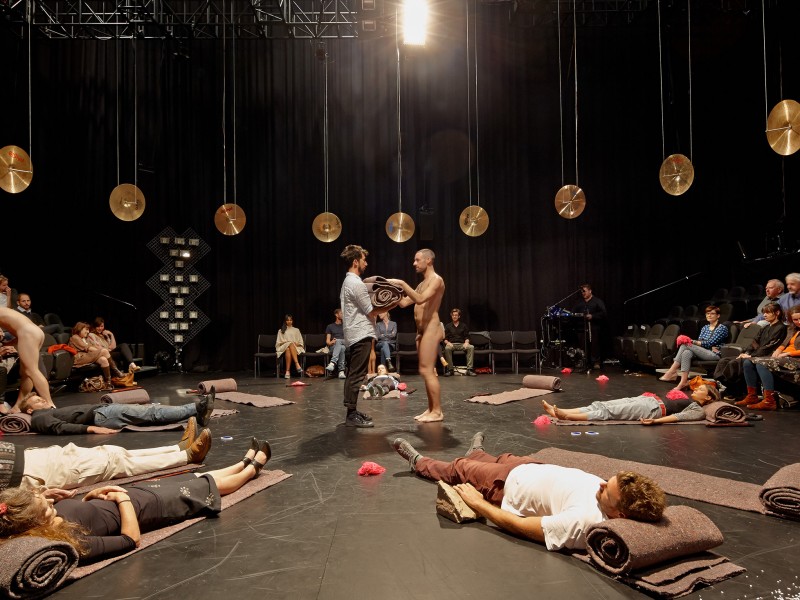In many ways creative collaboration has become the key to marketing and business expansion in the 21st century. The trouble is, not enough of our biggest and most capable businesses know it yet. Championed historically by those closest to the epicentre of cultural and creative practice, there have been numerous contemporary examples to inspire and comfort even the most sceptical CFOs. Technology giant IBM used radical collaboration to save their leading edge chip technology business by opening their doors to competitors in order to share research. HUB, a collaborative platform, established a unique global ecosystem of people, places and ideas dedicated to creating innovative solutions for a more sustainable world. While Microsoft collaborated on their Xbox Kinect platform to develop a hands free technology assisting surgeons in the operating room.
So why do those capable of realising the richest tapestry of collaboration often favour the most vanilla form of its expression, the all persuasive and rudimentary nomenclature of brands? Karl Lagerfeld for H&M, Jean Paul Gaultier for Piper-Heidsieck Champagne, Stella McCartney for Target. What happened to the substance? What happened to our expectations as participants?
Mark Cunliffe, Brand Manager of Yering Station, a winery situated in one of Australia’s oldest wine regions, admits he wasn’t quick to see the potential in a new platform for creative collaboration—he was thinking more about the nuances of wine. But in January 2013 he was certainly responsible for bringing one to life. Passionate about establishing an ongoing platform where new possibilities could flourish from the fertile terroir of collaborative ideation, knowledge sharing, resource pooling and interdisciplinary thinking, Cunliffe and the Yering Station team assembled a list of Australia’s most formidable and influential cultural institutions to discuss the future of commercial and creative practice. As a result, the Yering Station Creative Workshop 1.01 was born.
The event commenced with a coffee in Yering’s spacious and well-appointed restaurant. Overlooking the ancient terrain of the Yarra Valley, the history of the site was amplified by Yering’s large contemporary architectural footprint. In many ways it was a fitting metaphor for the venture—contemporary framework / archaeological investigation. The workshop itself was held in one of Yering’s heritage listed barns and began with the introduction to the inner workings of our most respected institutions. The Melbourne Writers Festival, Heide Museum of Modern Art, Balletlab, Melbourne Spring Fashion Week, Spirit of the Black Dress, Biennale of Sydney, Materialbyproduct, Queensland Art Gallery—Gallery Of Modern Art (QAGOMA), 3 Deep, Chunky Move, Melbourne Festival, Melbourne Arts Centre and artist Amelia Lackmann all introduced their commercial objectives, idiosyncratic challenges, current affiliations and future aspirations. Cunliffe, a gracious and passionate host, facilitated the discussion and delicately formed connections between each of the creative giants. It was impressive and subtle in equal measure.
Cunliffe enthusiastically affirmed that “the opportunity we have to engage and interact with such an influential and inspiring group is beyond measure”. At all times throughout the morning he advocated for the notion that alliances are critical to the longevity of Yering’s business and that when managed with care and thought each can be immensely rewarding. Not only for the organisations, but for their customers, their patrons and their supporters. “Taking on the challenge of addressing and nurturing our partners was the obvious next step.”
Cunliffe recognises that in Yering’s case, alliances in the arts sector are often shared. “Collectively I’m interested in exploring solutions to all of our shared challenges, whether that be around raising awareness, driving visitation, understanding consumer desires or critiquing the fundamental structure and fabric of our cultural landscape.”
Zoe Graham, Senior Sponsorship and Business Development Officer from Queensland Art Gallery and the Gallery of Modern Art (QAGOMA), said, “The real highlight for me was that they (Yering) really mean what they say in terms of they want to support the arts and cultural creativities, without hiding the fact that they are using it as a platform for their beautiful wines. It’s just exciting to be a part of that and to be a part of such a privileged group and be really involved with them.”
Throughout the workshop it became apparent that there were common challenges for each organisation that were underpinned by resourcing, digital innovation, the need for more substantial partnerships, funding, re-engaging current audiences and establishing a greater national and international footprint.
Luke McKinnon, Marketing and Development Manager from Chunky Move and Fiona Kelly, Head of Marketing and Communications from Melbourne Festival, both reiterated the need to reposition their brands in a fluid and dynamic landscape. Kelly introduced plans for a new brand rollout in 2013, which she said was ignited by the need to redefine the festival brand to necessitate the changing sensibilities of the city. Kelly also discussed the success of the Festival Hub erected on the bank of the Yarra River. The Hub responded to the young and vibrant nature of Melbourne city and established a broader spectrum of audience through generating a new mode of engagement with the community.
McKinnon specifically highlighted the need for Chunky Move to “Change pre-conceived notions of what contemporary dance is” in order to establish a position of longevity for the brand while simultaneously having a greater influence on culture. He was also excited by the prospects of the Yering Station Creative Workshop 1.01, “We have a whole bunch of audiences that we can tap into in different states, at its base level it’s fantastic for all of the organisations. I hope it’s the start of something new and different that we can do as partners.”
As the numerical title of the workshop suggests, Cunliffe believes that the initiative was one of introduction and that “Now is the time where people can go away and think about ideas, the new ways of working and how each organization can contribute. In 6 months time we will reconvene and start to bring specific initiatives to life. The consistent feedback we keep hearing is that this process is evolutionary and outcomes will manifest themselves over time.”
Interestingly, the workshop revealed notions of combining multiple platforms to diversify topics and experiences at cultural events. Collette Stewart, Marketing and Development Manager for The Melbourne Writers Festival, was interested in a potential collaboration with Balletlab on Buddhism. Stewart was excited by the idea of an academic discussing notions of Buddhism and how this could be enhanced by a curated performance to create a more immersive platform of cultural exchange.
Graham also welcomes the potential for collaboration. “I think there is a lot of exciting opportunity around creative collaboration and I think as some of the people talked like Balletlab, Chunky Move, The Writers Festival, Melbourne Festival and Biennale of Sydney about the cross collaboration and that diversification of art forms and practice … Phillip Adams was talking about taking contemporary dance into galleries and museums and I know he isn’t just talking about putting them on a little stage in a gallery, but really inhabiting the space and changing the perceptions and understanding of what dance could be.”
Susan Dimasi, from luxury fashion house Materialbyproduct (MBP), affirmed the significance of Australia’s cultural fabric through her view on the potential behind collaboration. “It’s less about creating things and more about creating culture.” Dimasi went on to discuss her recent collaboration with BalletLab where the pair envisaged “fashion for performance”. Her intuitive approach to garment construction and material helped to generate a curious assortment of outcomes that responded to the body overtime, changing throughout and during a performance.
As a Luxury Fashion House that defines the 21st century, Dimasi’s contagious view on Melbourne’s creative landscape was expressed when articulating MBP’s role within it: “Often when I try to position MBP in peoples minds I say, ‘for me now, Melbourne is what 1930s Paris was’. I have amazing collaborations with Balletlab, Shelley Lasica, 3 Deep and Julia deVille. I don’t need to go anywhere else in the world to get this sort of network. I have these sorts of relationships and collaborations on board right here, right now. Often the way I try to contextualise that in people minds is that you don’t need to go overseas to access this and you don’t need to travel back in time. I think Woody Allan’s movie Midnight in Paris summed it up beautifully, it’s happening right here, right now, embrace it.”
McKinnon from Chunky Move agrees, “The best art is of its time and you know it’s certainly lodged to the past and its respect for the past but the best art is being touched on by a lot of people today”. He believes that those on the vanguard are merging new genres from all spheres of the Arts. “Something that chunky move has always done is broken the mould in terms of what contemporary dance can be, by bringing in a sculpture artist or working with multimedia artists and challenging what contemporary dance can be. The best art is always challenging the status quo to an extent, or at least building from it so I think that the future is bright. You just have to look at the amount of organisations that are here today supporting young artists, as well their regular program. It’s an exciting prospect and one that I hope to be involved with for a long time to come.”
Artist Amelia Lackmann gained great insight and built a new network through presenting her work to the group. “I found it incredibly inspirational for someone who is an artist. It provided a window into the world of marketing and branding and how alliance works and how that might flow into my own practice in terms of expanding. It was just great to have insight into what the options are.”
The inaugural Yering Station Creative Workshop 1.01 was very much about new beginnings, new partnerships and new thinking. Cunliffe and Yering Station team aim to hold the workshops biannually in order to stimulate conversation and keep the networks and opportunities expanding. “There are some incredible thinkers in that room and I see that part of our role was to connect them with each other and provide a curated forum to discuss, talk and act. That was our main objective to be honest and I look forward to actively nurturing the discussions moving forward. Some may not necessarily involve us, but either way we feel like we contributed to the discussion and that’s important for us. I’m really looking forward to pursuing a group project together, where the strength of our collective group instigates something special, something lasting. Be it an aesthetic outcome, a new platform, a new work or a solution to an existing social problem.”
Related Features
-
18
-
-
-

